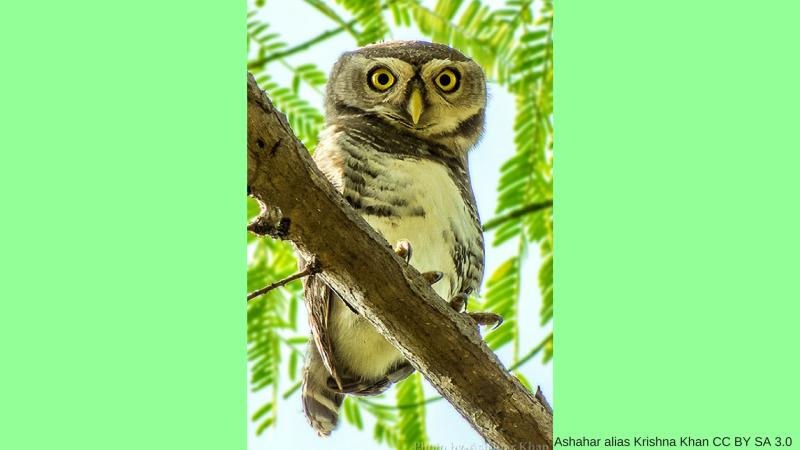
The forest owlet (Heteroglaux blewitti), an owl endemic to the forests of Central India, has been the centre of a century-old debate among ornithologists. Its classification into the particular genera is at the stem of this debate. Now, a new study by researchers, involving genetic analysis of the owl’s genome, may put an end to this debate forever.
Scientists have always classified the forest owlets under one of the three genera -- Athene, Heteroglaux and Glaucidium, for various reasons. So far, no genetic analysis had been carried out to aid the classification process and settle the debate. The study, carried out by researchers from the Salim Ali Centre for Ornithology & Natural History, Manipal Academy of Higher Education, Indian Institute of Science Education and Research- Tirupati, Wildlife Research and Conservation Society, Loyola University, USA and the National Centre for Biological Sciences, Bangalore, suggest that it should be Athene, based on the genetic analysis carried out for the first time.
The researchers explored 3 hypotheses, each of which classifies the forest owlet into separate genera. The current classification of the forest owlet, which puts it into the genera Heteroglaux, was based on a study from 2013 that involved the bird’s body structure and bones. An earlier study of 1999, based on the tail flicking behavior displayed by the bird, has argued to classify the bird either into Athene or Glaucidium genera. In 1975, yet another study had hypothesized that the forest owlet and the spotted owlet (Athene brama) together form a subgenus Heteroglaux, nested within Athene, but provided no specific reason for the same.
“The current classification of H. blewitti in a monotypic genus Heteroglaux claimed by Rasmussen & Collar (2013) is based solely on an assessment of morphological and osteological characteristics without phylogenetic data. This classification needs further scrutiny by incorporating phylogenetic information”, opine the researchers.
In this study, the researchers have used phylogenetic analysis -- tracing a relationship between species based on the similarities in their genetic and/or physical characteristics -- to identify which of these hypotheses would hold true. At the end of a such an analysis, the results will be ‘evolutionary trees’ that show how closely a species is related to other species and the common ancestor from which they evolved.
For the study, the researchers collected genetic data from not only the forest owlet, but also from other closely related species of owl, like the spotted owlet and the jungle owlet. To compare the genetic histories further, they also collected samples from species of owls from Madagascar and other not-so-closely related species from India. They examined the DNA from the mitochondria, which is an organelle in the cell, and the DNA in the nucleus, for the study.
The results showed that the evolutionary tree, obtained from the mitochondrial genetic evidence, points out that the forest owlet is a sister to the Eurasian Athene clade, whereas in the evolutionary tree from the nuclear DNA, it was sister to Athene from Madagascar and the Americas. “Based on our results, we propose that Heteroglaux is treated as a synonym of Athene, identifying Heteroglaux blewitti as Athene [Heteroglaux] blewitti.”, say the researchers in their study published in the journal PLOS ONE.
So, the next time someone says ‘what’s in a name?’, turns out, it could be a century-old debate!
